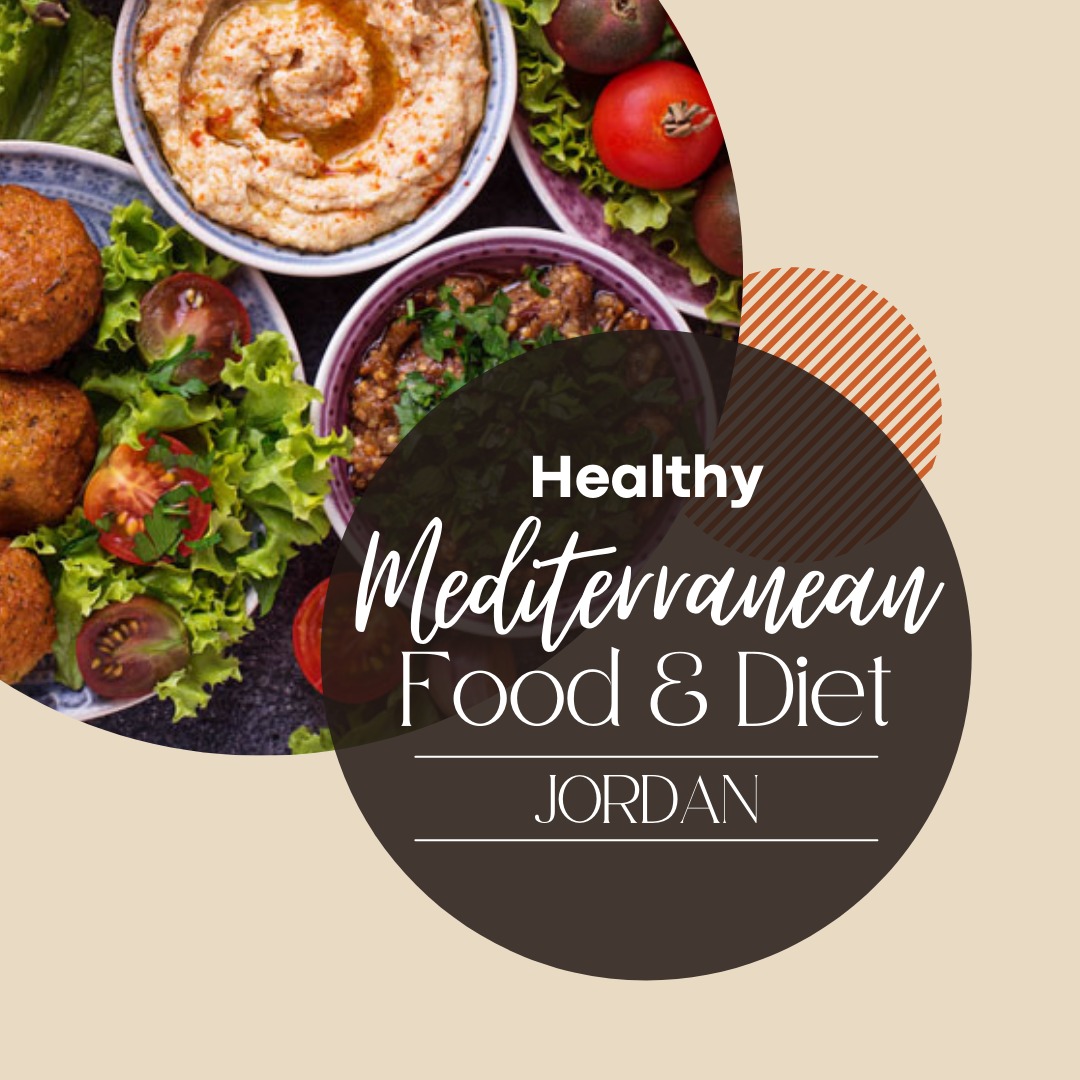What is the Mediterranean diet?
The Mediterranean diet is a way of eating that's based on the traditional cuisines of Greece, Italy and other countries that border the Mediterranean Sea.
In Jordan, taking care of your body entails eating and drinking healthily. Fresh, natural food, generally organic, is the norm in households and businesses. Breakfast is almost sacred in its depiction of the land: delicious dried dates, olives cured in Dead Sea salt and gathered directly from the trees outside, golden honeycomb with exquisite undertones of citrus, and circular sheets of Arabic bread cooked over the fire, soft and light with an earthy flavor. The milk from the hills is used to make a range of soft white cheeses, as well as the delicious labneh, a sour fermented yogurt with more protein and less lactose and sugar.
Jordanian cuisine expands on Mediterranean simplicity with a wonderful variety of spices. Za'atar, made from a variety of locally cultivated herbs, is the go-to condiment for almost everything. Every chef has their own secret mix, but the key components are thyme, oregano, toasted sesame seeds, Summaq salt, and pepper. Not only does za'atar make everything taste better, but the herb combination is also strong in antioxidants, so it's excellent for you. Dipped using the Arabic bread in the flavorful olive oil, and garnishes with Zaatar is your perfect bite into heavens. It is the Peanut butter of the Jordanian Household.
If you have ever visited Jordan, In most Levantine restaurants you will be presented with the “Appetizers” list under the name of Mezzeh, it consists of many small dishes for you to taste almost everything that is on the table. Some of the options will fall under this category are the following additions to the great Mediterranean cuisine list of food:
Hummus
Although its components are basic, hummus can differ from place to region. It is a mainstay in Levantine cuisine and can be found all around the Middle East and Arabic lands. Hummus is made with chickpeas, Tahineyyeh (sesame paste), olive oil, lemon, and garlic, can be flavored differently and eaten with a variety of toppings, including yoghurt, chickpeas, and beans, as well as meat. Jordanian hummus is served hot or cold and is frequently eaten for breakfast, street food lunch, or as part of a mezzeh.
Fuul ( Fava Beans )
It is a basic cuisine with a long history in Jordanian culture ,It is nearly usually served as part of a mezzeh or may be eaten on its own, and is frequently served for breakfast. Fuul is a dish cooked with crushed fava beans and served with olive oil and seasonings. This meal, which is frequently garnished with paprika or cumin, can also be served with fresh herbs, tomatoes, chopped onion, or a hard-boiled egg.
BabaGhannouj
Another eggplant meal that differs from Moutabel but is cooked in the same manner. It varies by area, but it often comprises of grilled eggplant that is often charred to provide a smokey flavor. The char provides depth and a smokey taste that is frequently combined with garlic, tahini, and other spices, or tomatoes.
Makdous
It is an eggplant meal that is different from Babaghanouj in that it is created with oil-cured eggplants. These (typically smaller) eggplants are then stuffed with a number of various ingredients, including nuts (walnuts) or peppers, as well as garlic and spices. These stuffed preserved eggplant mezzeh are unusual and tasty, and are considered a component of Levantine cuisine.
Falafel
Deep-fried balls consisting of chickpeas and spices, may have a variety of flavors across the world. But the best can be found in Jordan, with the great mix of herbs, spices and chickpeas. The flavor of falafel is influenced by the kind of chickpeas and spices used. Falafel may be found all around Jordan and is frequently considered street food as well as a component of mezzeh dining too.
Waraq Enab
Those are grape leaves that are packed, rolled, and then cooked. They can be stuffed with only rice or with rice and meat. The grapevine leaves are harvested and packed before being steamed or boiled until the filling is cooked. They can be served hot or cold in the mezzeh and come in a variety of sizes.
Pickled Vegetables and Olives
Pickled veggies are a staple of Jordanian mezze cuisine, will be on the table all the time. Pickled vegetables such carrots, cucumbers, cabbage, radishes, and cauliflower are eaten alongside the other meals. These lend salinity and tanginess to the mezzeh, bringing out the tastes of the other ingredients. In Jordanian and Palestinan lands where the Olive trees are grown almost everywhere in the regions, making the Olives ( Black and Green ) as a part of Jordanian tradition and culture, as they flourish across the country, in addition to the olive oil, which is an important element of Jordanian cuisine. Many different olive varietals are available and are frequently served as part of Jordanian mezzeh.
Those are just the starters to get your mouth filled with juices! We can assure you that you will have a greater experience once you start diving into the main dishes. That was just the start!
At last, we have one question to you, When is your next visit to Jordan?!
